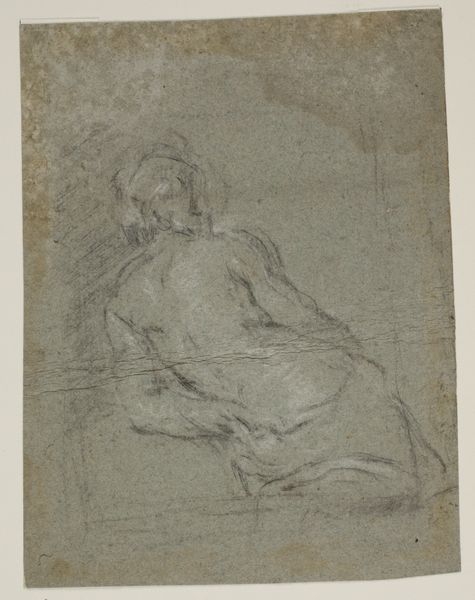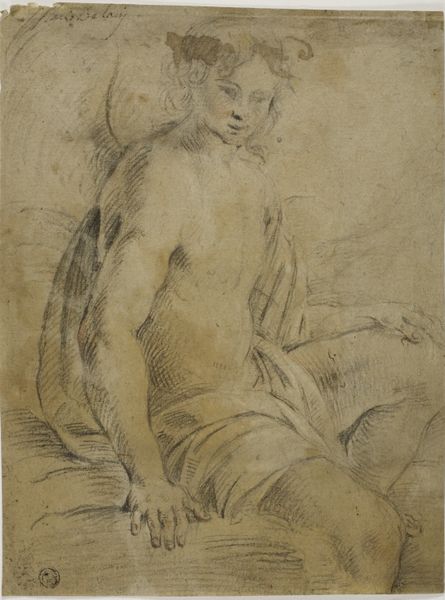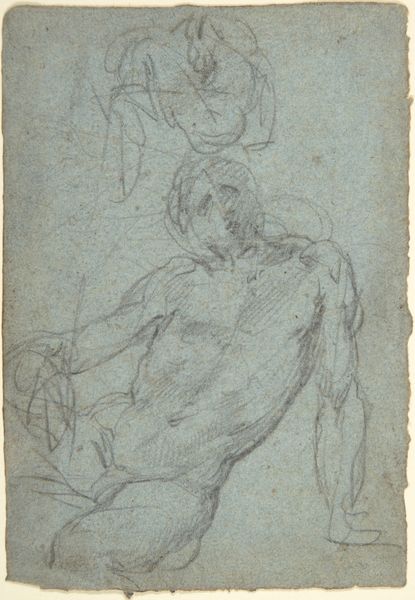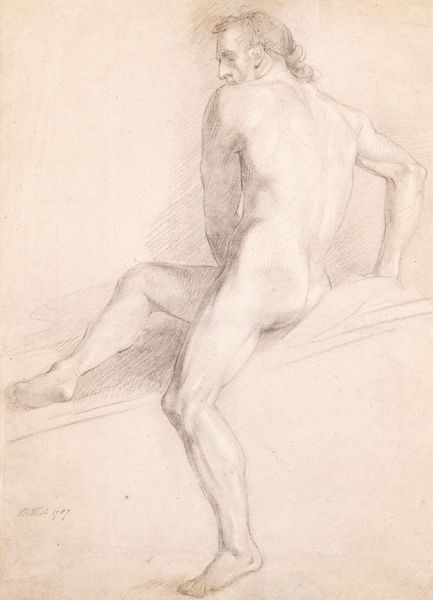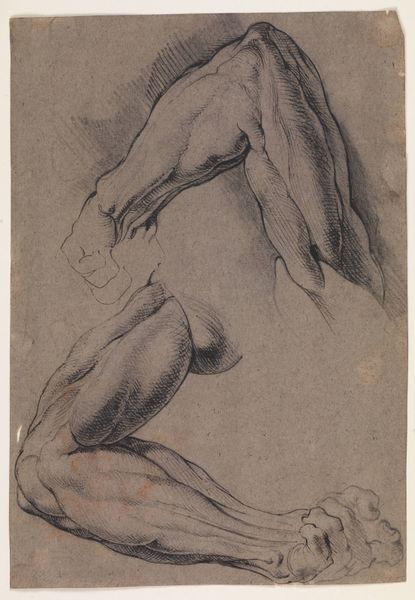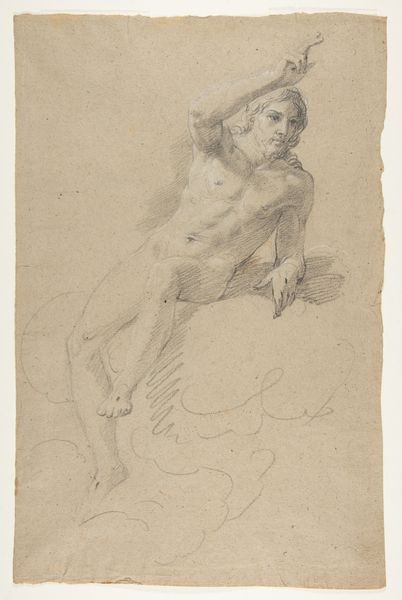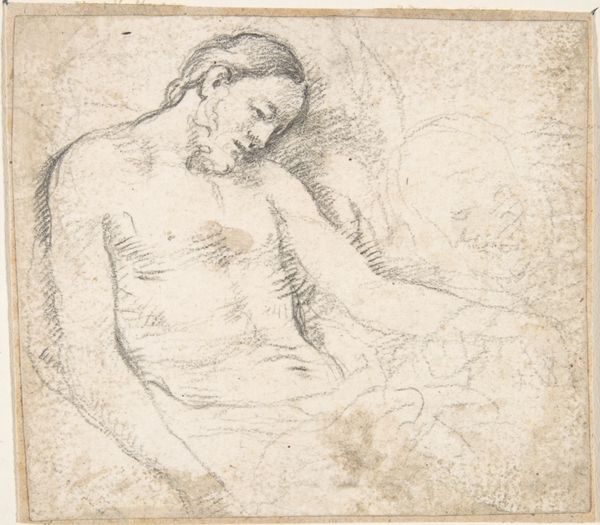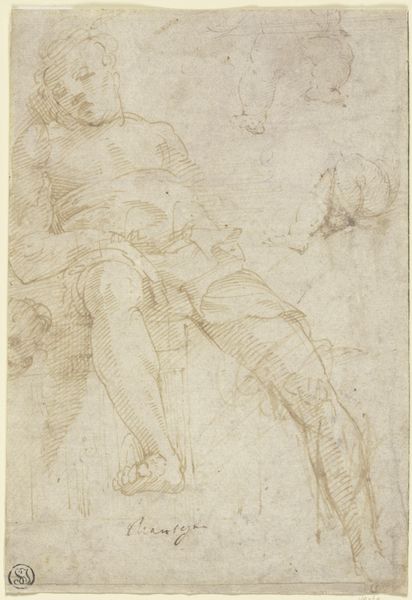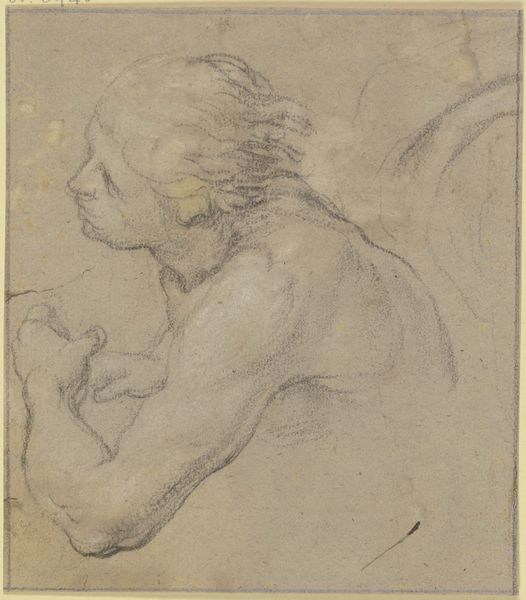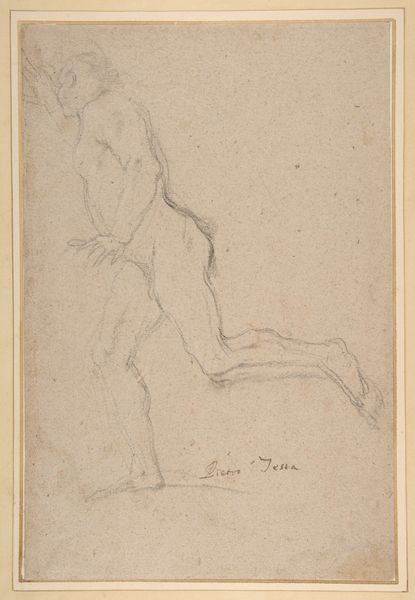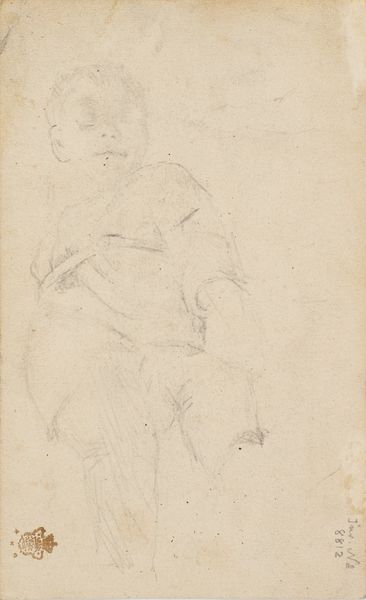
drawing, charcoal
#
drawing
#
baroque
#
charcoal drawing
#
figuration
#
charcoal
#
italian-renaissance
#
nude
Dimensions: overall: 38.3 x 25.9 cm (15 1/16 x 10 3/16 in.)
Copyright: National Gallery of Art: CC0 1.0
Curator: What a sketch. Immediately, I'm taken by the sort of smoky, smoldering quality of this drawing. Editor: You’ve picked up on something central to this piece. Here we have Annibale Carracci's "Satyr Holding a Roundel," created between 1597 and 1600 using charcoal. Carracci, of course, played a crucial role in establishing the Baroque style. Curator: Right, that charcoal. It's more than just a medium here. It evokes a kind of subterranean moodiness. He's so grounded and carnal. Like the Earth itself gave birth to this drawing. Editor: I see Carracci's "Satyr" less as an organic eruption and more as a carefully crafted revival of classical ideals, filtered through the lens of the Renaissance. We have this figure from mythology placed centrally, referencing ancient sculpture. Note the academic quality of the nude. How might we see its connection with Carracci’s workshop and its teaching methods? Curator: Oh, for sure, the Renaissance bones are showing, but the spirit is pure unadulterated… mischief? Look at that playful leer. To me, it isn't some stoic homage. He's almost teasing us from beyond the roundel. Editor: Perhaps. Though that "teasing," that engagement you feel, it also depends greatly on who had access to art like this. Drawings like these weren't publicly displayed; they circulated among a small elite of artists and collectors. That changes how we understand his intentions. Curator: So, it becomes this private joke shared across centuries? I like that image! All of that being kept quiet is what amplifies the magic in this. It adds depth and, I think, a vulnerability to Carracci's artmaking. He had the rare chance of creating the rules for a restricted club of admirers and colleagues. Editor: Precisely, and situating this piece in its historical context opens it up. How does it play a role in legitimizing academies? Or establishing the canon? Curator: All the theory aside, I just enjoy picturing his eyes dancing as he drew it. Thank you, Annibale. Editor: And thinking about it from today’s perspective, his subversion comes through more clearly. Art as activism is a product of his world too.
Comments
No comments
Be the first to comment and join the conversation on the ultimate creative platform.
